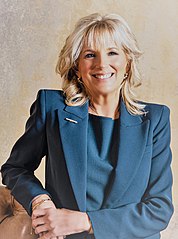
As Jill Biden takes her place as the 43rd official “First Lady” of the United States, it’s a good time to look at how the role has evolved since Martha Washington inaugurated the position in 1789. At that time, with no precedent for her position, many referred to the President’s wife as Lady Washington. The United States was a small democracy that needed public functions equivalent to those in Europe. At the same time, Americans did not want to emulate aristocratic classifications. Martha Washington’s choices set the tone for this new, ambigous position.
Trail Blazer Martha
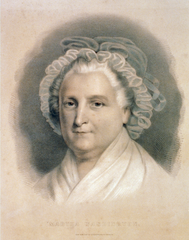
Martha Dandridge Custis Washington (1731-1802) was born into a prominent Virginia family. When Martha was 18, she married Daniel Parke Custis, a man twenty years her senior. The couple had four children.
In 1757, Martha became a wealthy widow with two surviving children, a 16,500 acre plantation, and 300 slaves. For the next two years, Martha managed her own affairs, but young, wealthy widows didn’t remain single very long. The difference was that for her second marriage Martha, within appropriate parameters, chose her own husband. In 1759, Martha married George Washington, a handsome, tall militia officer who gained both a charming wife and her property. The couple moved to his home at Mount Vernon with her children.
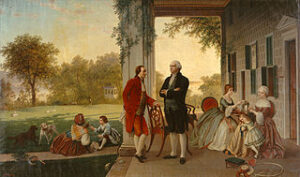
In 1775 the Continental Congress appointed George Washington as commander of the Continental Army. After undergoing innoculation against small pox, Martha stayed with her husband when the army was at winter quarters. She rallied women to raise funds to buy shirts for the soldiers, knitted garments for the troops, and copied her husband’s letters. During the campaign season, Martha went home to Mount Vernon.
When Washington became president in 1789, Martha moved to the new capital at New York and created a presidential household at the executive mansion. She also, in keeping with her position and customs, hosted Friday evening receptions for members of Congress, visiting dignitaries, and prominent men and women from the local community. This Republican Court, done in a formal style, was an important venue for informal negotiations. After 16 months in New York, the national capital moved to Philadelphia, where Martha continued to set the tone of presidential entertainments.
Outspoken Abigail
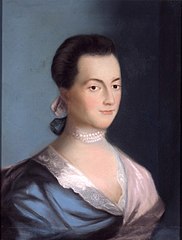
Abigail Adams (1744-1818) came from a prominent family in Weymouth, near Boston. She married John Adams in 1764 when she was 19 and he, 28. The couple had 6 children with four surviving to adulthood. While John was away with the Continental Congress and then the Constitutional Convention, Abigail kept the farm going, raised her children, and gave John her opinion of events.
After the revolutionary war, Abigail joined her husband in his diplomatic postings to France and Britain, where she observed social behaviors that, as the future president’s wife, she would later fulfill. When Adams became president in 1797, the capital was still at Philadelphia, but in June 1800, John Adams became the first president to reside in Washington, first at a hotel, and then, on November 1, at the new White House.
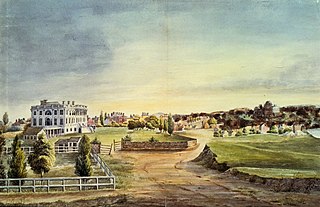
The house was cold and damp, despite fires in every room. Abigail kept the doors closed to reduce drafts in the empty rooms. The government paid for executive furnishings, but many items were lost in transit from Philadelphia. Abigail requested new carpets, window curtains, looking glasses, table china, linens, and what she called a superior tea set. However, Abigail didn’t know how long she would be staying in Washington, because her husband was in a fractious re-election campaign, which he lost.
Jefferson’s Acting First Ladies
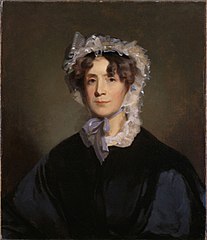
In 1801 Thomas Jefferson became the third president of the United States. He had been a widower since 1782, which presented a new challenge. It was expected that receptions and other entertainments would be held at the White House, and ladies could not attend social events in mixed company unless there was a hostess. If she was available, Jefferson’s daughter Martha Jefferson Randolf took on the role of First Lady, serving in 1802-1803 and 1805-1806. But Martha had eleven children and also looked after Monticello.
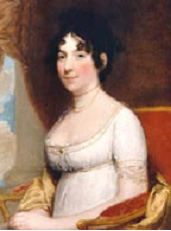
So, when Martha wasn’t in Washington, Dolley Payne Todd Madison (1768-1849) presided at social functions. Dolley married James Madison in 1794. When Jefferson named Madison as Secretary of State, the couple took a large house, because Dolley thought her drawing room was a good place for lawmakers to meet each other. Dolley continued the practice when her husband became president.
When she became the official First Lady, Dolley did more than oversee the presidential household and act as hostess. She was the first White House occupant to take on a service project when she founded the Washington Female Orphans Asylum. Known for her fashion sense, Dolley attracted newspaper coverage to raise funds for her cause. She bought a cow for the asylum, and also helped sew uniforms for the girls.
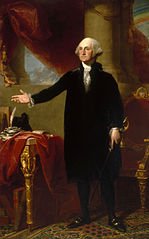
Though long remembered for her entertainments, Dolley became famous in 1814 when she rescued George Washington’s portrait from fires being set by British troops in the War of 1812. Dolley refused to evacuate the White House until the painting was safe. The 8.12 foot by 5.21 foot painting was screwed into the wall. The only way to remove the painting was to break the frame and detach the canvas. Today the portrait hangs in the East Room of the White House.
La Belle Américaine
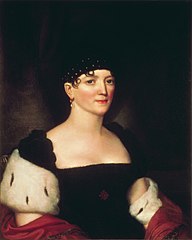
Like Abigail Adams, Elizabeth Monroe (1768-1817) had extensive experience as a diplomat’s wife. She accompanied her husband to revolutionary France in 1794. The next year, Mrs. Monroe visited Madame Lafayette* in prison the day before the prisoner’s scheduled execution. Elizabeth then announced she would visit again the next day. Under the circumstances, the French government released Madame Lafayette on January 22, 1795.
Twenty-two years later when James Monroe became president, Elizabeth was an experienced hostess, but in poor health (possibly due to epilepsy). She curtailed her public engagements, including now expected social custom of “paying calls,” thus annoying diplomats and other dignitaries. Elizabeth’s oldest daughter Eliza Monroe Hay fulfilled many of the duties of hostess, but she was no match for Dolley’s precedent.
The Last First Lady with Ties to the American Revolution
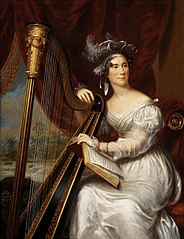
Louisa Catherine Johnson Adams (1775-1852) was born in London to an English mother and American father who served as United States consul. She met John Quincy Adams, son of the former president, in 1794. At the time, he was a diplomat to the Netherlands. After they married, he was transferred to Berlin. Louisa didn’t arrive in the United States until 1801. Shortly thereafter, Louisa’s husband was became Minister to Russia, then to Ghent as part of the negotiations to end the War of 1812, and finally to London.
In 1817, John Quincy Adams became Monroe’s Secretary of State. Finally established in Washington, Louisa established drawing room receptions on Tuesday evenings, theater parties, and other social events.
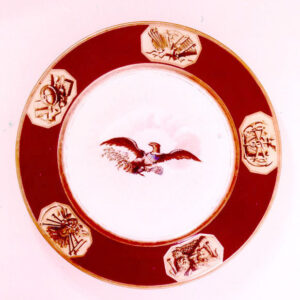
After the bitter election campaign of 1824, election results fell to the House of Representatives. Some say that through her weekly open house and attendance at congressional sessions, Louisa gained favor with the congressmen who would later decide the presidential election.
Like her mother-in-law, Louisa found the White House to be cold, isolated from the rest of Washington, and in need of so much attention that she opened the house for public tours so people could see the president did not live in luxury.
Louisa continued her drawing room receptions when her husband became president, hosting dinners for 30 or more guests. Her most complicated role as hostess was when Marquis de Lafayette and his entourage stayed at the White House during his public tour of the United States (1824-1825), forcing the president’s family to give up their bedrooms and hire extra servants.
Six women set the tone for the position of First Lady. Those who were spouses married ambitious men, and used their social skills on behalf of heir husbands to forge political alliances. It’s fair to say that in a time when women had no direct political outlet, they sublimated their own ambitions into their husbands’ career. At the time, this was appropriate. Dolley Madison reached a bit further to create a separate public persona, though caring for orphans was an acceptable women’s activity.
Times change. As this series progresses, women occupying the role of First Lady will both reflect social expectations and occasionally forge a separate pathway.
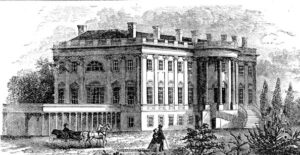
*Madame Lafayette’s husband, the Marquis de Lafayette, served in the American Revolution, and commanded troops in several battles, including Yorktown. An early supporter of the French Revolution, Lafayette found himself the target of radical factions in 1792. Lafayette escaped, but his wife was arrested and sentenced to death until Mrs. Monroe’s intervention.
Illustrations
Jill Biden. public domain
Martha Washington, published by Currier & Ives. public domain
Washington and Lafayette at Mount Vernon, 1784 by Thomas Prichard Rossiter and Louis Remy Migonot.
Abigail Adams by Benjamin Blyth
Washington DC and the White House, 1827
Martha Jefferson Randolf
Dolley Madison
George Washington (Lansdown Portrait) by Gilbert Stuart, 1796
Elizabeth Monroe by Eben F. Comens, 1816 or 1820
Louisa Adams by Charles Bird King, c. 1821-1825
White House China James Monroe Administration
White House from the southwest. Mid-19C
National First Ladies’ Library.
National Museum of American History: First Ladies
First Ladies of the United States. National Portrait Gallery.

Sandra Wagner-Wright holds the doctoral degree in history and taught women’s and global history at the University of Hawai`i. Sandra travels for her research, most recently to Salem, Massachusetts, the setting of her new Salem Stories series. She also enjoys traveling for new experiences. Recent trips include Antarctica and a river cruise on the Rhine from Amsterdam to Basel.
Sandra particularly likes writing about strong women who make a difference. She lives in Hilo, Hawai`i with her family and writes a blog relating to history, travel, and the idiosyncrasies of life.


Hi Sandra,
Remember Bob Watson (I think) in Political Science back in the late 90s? He had a particular interest in First Ladies and I think even started a journal. He’s also written more than one book, on-topic, here’re a couple :
http://robertwatson.net/books/first-ladies-of-the-us
https://www.amazon.com/Presidents-Wives-Reassessing-Office-First/dp/1555879489
I think he’s at Florida Atlantic U.
Happy New Year and best wishes!!
David
PS Sorry if I missed a reference to him in your Blog.